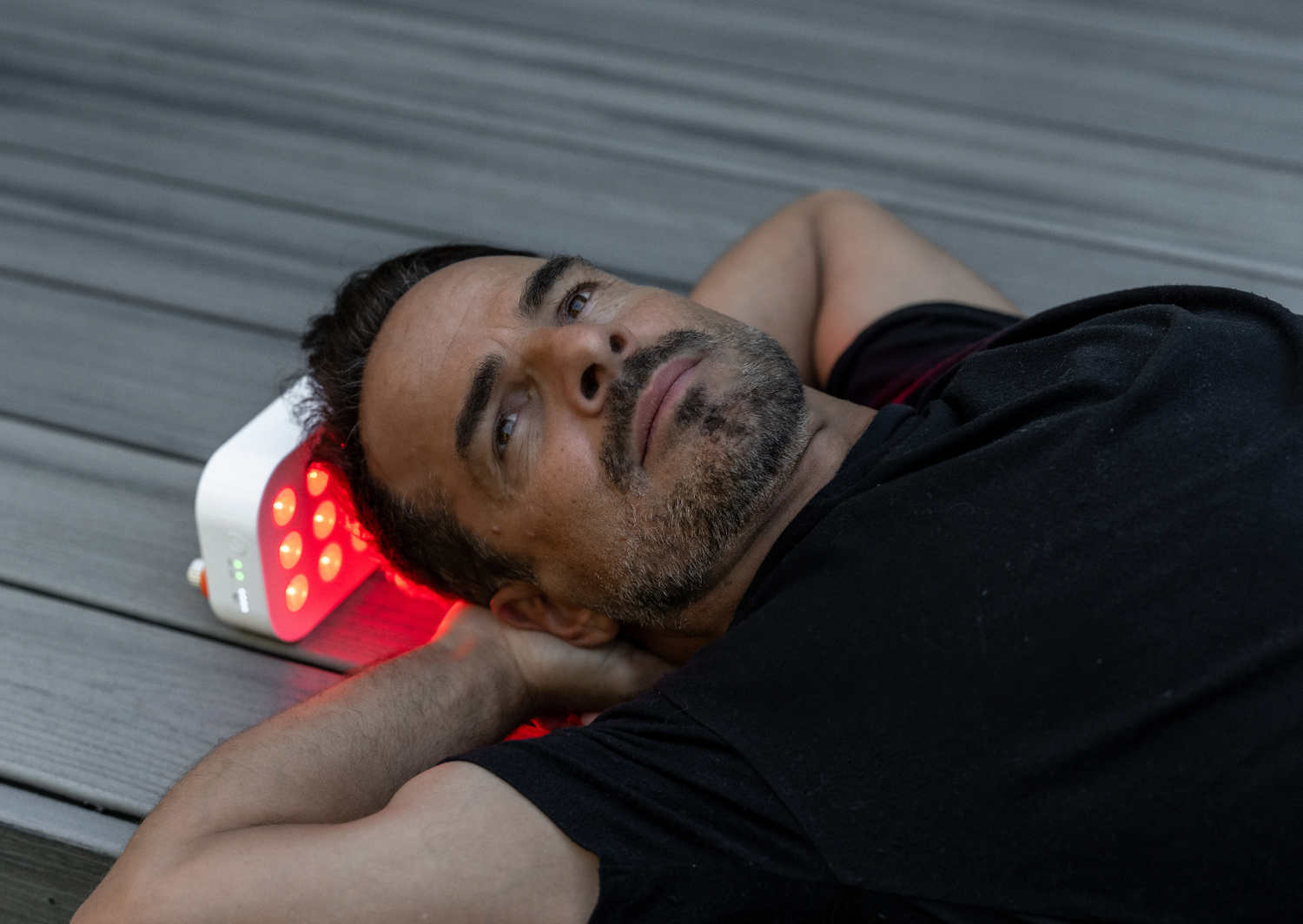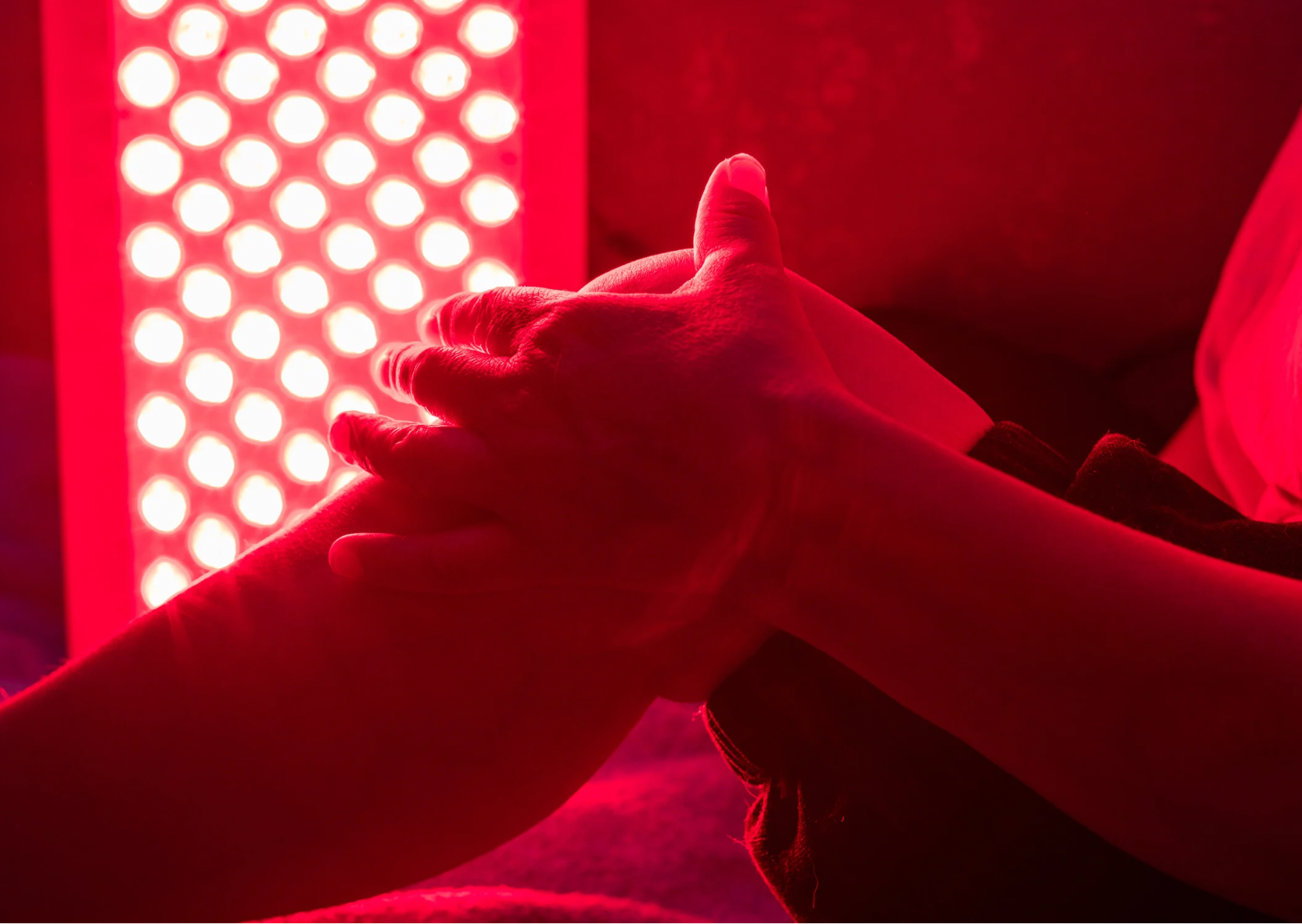Are you someone who struggles with slow hair growth and wants to have longer, thicker, and healthier hair?
If you’ve fallen down the Tiktok beauty hacks rabbit hole recently, you’ve likely been overwhelmed with hair masks, oils, and the wide spread of all the things that have gone viral with influencers convincing you against your better judgment to buy. From hair gummy vitamins to anti-hair loss shampoos, there is a plethora of “must-have” hair growth products that the internet is telling us to buy, consume, and adopt into an ever-growing routine.
However, not all hair loss treatment methods were created equal. This blog post will go into a deeper dive of what you need to know about hair loss: causes, treatments, and tips for promoting hair growth. This blog post is for general education purposes only - always consult your doctor before starting a new treatment or changing your lifestyle.
Now, What Really Causes Hair Loss?
Whether it’s a clump of your hair in your hair drain-catcher when you shower, a receding hairline, or thinning from bleaching and processing your hair as you navigate different hair identities, hair loss can really knock down one’s confidence and self-image––and is a great cause of anxiety and depression in some men and women. Whether you are suffering from patterned hair loss or simply wanting to thicken your hair to get rid of your hair extensions, understanding what is causing your hair to fall out is the first step to a head of fuller, healthier hair.
Hair loss can happen to anyone at any time––for a variety of reasons. Here are some common ones but it’s really important you work with your doctor to see what causes of your hair loss could be.- Androgenetic Alopecia
Androgenetic alopecia is one of the leading causes of patterned hair loss in men but can happen to all. Some people are genetically over-reactive to DHT, a more active form of the male sex hormone testosterone, that binds to receptors in your scalp and causes hair loss. This just means that some people have a genetic predisposition to DHT reactions, not a definitive diagnosis of doom if other people in your family has experienced hair loss.
For men, male androgenetic alopecia (MAA) is the most common cause of hair loss, affecting 30-50% of men by the age of 50 [1]. The hair loss is mostly focused at the hairline and contributes to the “receding hairline” effect where MAA preferentially affects the temples or vertex and mid-frontal scalp.
As for women, androgenetic alopecia is mostly focused on the top/crown of the head and occurs around menopause (but may present itself earlier in life too) [2]. It is caused by the same susceptibility to DHT as in males, and worth exploring with a doctor well versed in female hormones.
- Hormonal fluctuations:
Postpartum and birth control
During pregnancy, women experience a spike in estrogen levels that shifts hair into a growing phase. After birth, hormones go back to the baseline levels and cause varying levels of hair shedding and decreased density that usually peak at about 4 months later [3]. Stopping, starting, or changing birth control pills with estrogen can also cause hair shedding.
Thyroid Conditions
Severe and prolonged hypothyroidism and hyperthyroidism can also cause hair loss. The hair loss is usually spread out around the whole scalp rather than in specific patches. This is because abnormal thyroid function often interferes with the absorption of iron and other micronutrients that are instrumental in promoting healthy hair growth [8].
Other common causes may include nutrient deficiencies, medications like: Accutane, systemic steroids, blood pressure medicine (propranolol), and hair habits (wearing tight hairstyles, processing at salons, shampooing too much or too little).
So I've Lost All This Hair... How Can I Grow It Back?
It depends… The first part is uncovering what caused it. This will look different for everyone. However, below are some evidence-based modalities:
Pharmaceuticals:
While there are some FDA-approved drugs, most of them have side effects.
- Minoxidil (topical cream or oral pill)
- Pros: 40-50% notice increased hair density after 6 months
- Cons: increase in hair shedding in first 2-3 months, contact dermatitis/irritation, and light-headedness; Minoxidil doesn’t cure hair loss and would have to be applied daily
- Spironolactone [10] (pill for women)
- Pros: can also be used to help hormonal acne
- Cons: menstrual changes, increased peeing, dizziness, and not safe for pregnant women
Hair Transplant:
Hair transplants on the other hand are also an option (albeit a more expensive one). The procedure takes 4-8 hours under local anesthesia. It requires a reserve of healthy hair follicles with risks of graft failure, infection, and 6-9 months for noticeable regrowth results.
Red light therapy:
There is another emerging modality with promising clinical studies showing it could help encourage hair growth (depending on the cause). Red Light Therapy (RLT), also known as Low Level Laser Therapy (LLLT), has been a more recent discovery that may promote new hair growth in androgenetic alopecia patients.
LLLT basically increases the blood flow to our scalp and helps our body bring in growth factors to revitalize our hair follicles which in turn allow for new hair growth.
Let’s dive into some studies:
Study #1 [5]: In studies of male and female pattern baldness, a meta-analysis found that LLLT was the most effective non-surgical treatment option as compared to taking minoxidil, finasteride, or dutasteride where subjects treated with LLLT achieved a 51% increase in hair counts as compared to sham-treated control patients in the trial. There were three groups who were being treated with either laser, LEDs, and one that was exposed to both. A subgroup analysis suggested that laser treatment (a therapy device with beams at a wavelength of 655nm was specifically used here) is significantly more effective than a combination of laser and LED treatments.
Study #2 [9]: This multicenter randomized controlled trial concluded that LLLT of the scalp every other day for 17 weeks using a laser device with diodes operating at 650nm is safe and effective (achieving a 51% increase in hair counts) for androgenetic alopecia in women aged 18-60.
Study #3 [6]: A significant increase in hair coverage was observed across a 24-week, randomized, double-blind, self-comparison trial of 100 patients with androgenetic alopecia who were treated with laser (of 650nm) and LED (of 660nm) phototherapy with a helmet.
Study #4 [7]: This in-vitro study found that the most potent wavelength in promoting hair proliferation is 660nm. Hair follicles that were irradiated with 415nm and 660nm LEDs grew longer than those in the control group, showing that photobiomodulation has the potential to stimulate hair growth. Both wavelengths were used and found to be comparatively effective.
Of course, as with everything in life - balance is key (there’s something called the biphasic dose response). While a too-high dose of LED-based red light therapy has not been shown to have serious adverse effect so far, using RLT for too long seems to negate the benefits of a stimulatory (growth) response that we desire for hair growth.
Note: LUMEBOX was not the device used in the above studies, however, the ideal wavelength of 660nm equates to “red” mode on LUMEBOX, and of course, always check with your doctor first before using red light therapy but in general, 1 treatment cycle of 12 minutes will deliver a good dose of light for most people.
Essential Nutrients
Think about your body as an ecosystem with all the different components working together to promote health and life. Some nutrients that are important for healthy hair include:
Vitamins A, B, C, D, E, iron, selenium, and zinc - ideally these are obtained from food sources, however, you might want to discuss testing and supplementing with your doctor if you are deficient.
Some hair-supporting foods include:- Eggs
- Berries
- Spinach/other dark leafy greens
- Fatty fish
- Brazil nuts, pumpkin seeds
- Avocados
The Takeaway
Red light therapy is an increasingly promising, yet sustainable, modality to support hair growth. Whether it’s effective very much depends on the underlying root cause, and we suggest you consult with your physician to hunt down the root cause first - the area where it’s showing most promise is androgenetic hair loss.
Not all devices are created equal. Here’s a free guide to help you learn more about red light therapy and how to pick the best device.
New to red light therapy? Download our free eBook to help you choose the best device.
Already have a LUMEBOX? Download our 6 time-saving tricks guide!
Medical Disclaimer: The information contained in this blog post is intended for educational purposes only and should not be used as medical advice. Everyone responds to light differently. Testimonials are not a guarantee of the results you or anyone who uses LUMEBOX will get because your success depends entirely on your circumstances, and the studies on red light therapy shared were not specifically performed using LUMEBOX. Please check with your doctor before using red light therapy and do not change your medical treatments or lifestyle without consulting your physician first.
References:
- Manabe, Motomu, et al. “Guidelines for the diagnosis and treatment of male‐pattern and female‐pattern hair loss, 2017 version.” The Journal of Dermatology, vol. 45, no. 9, 2018, pp. 1031–1043, https://doi.org/10.1111/1346-8138.14470.
- “Hair Loss in New Moms.” American Academy of Dermatology, www.aad.org/public/diseases/hair-loss/insider/new-moms#:~:text=Many%20new%20moms%20experience%20excessive,want%20to%20see%20a%20dermatologist. Accessed 10 Oct. 2023.
- Starace M, Orlando G, Alessandrini A, Piraccini BM. Female Androgenetic Alopecia: An Update on Diagnosis and Management. Am J Clin Dermatol. 2020 Feb;21(1):69-84. doi: 10.1007/s40257-019-00479-x. PMID: 31677111.
- Asfour L, Cranwell W, Sinclair R. Male Androgenetic Alopecia. [Updated 2023 Jan 25]. In: Feingold KR, Anawalt B, Blackman MR, et al., editors. Endotext [Internet]. South Dartmouth (MA): MDText.com, Inc.; 2000-. Available from: https://www.ncbi.nlm.nih.gov/books/NBK278957/
- Gupta, A.K., et al. “Efficacy of non‐surgical treatments for androgenetic alopecia: A systematic review and Network meta‐analysis.” Journal of the European Academy of Dermatology and Venereology, vol. 32, no. 12, 2018, pp. 2112–2125, https://doi.org/10.1111/jdv.15081.
- Mai-Yi Fan S, Cheng YP, Lee MY, Lin SJ, Chiu HY. Efficacy and Safety of a Low-Level Light Therapy for Androgenetic Alopecia: A 24-Week, Randomized, Double-Blind, Self-Comparison, Sham Device-Controlled Trial. Dermatol Surg. 2018 Nov;44(11):1411-1420. doi: 10.1097/DSS.0000000000001577. PMID: 29957664.
- Joo HJ, Jeong KH, Kim JE, Kang H. Various Wavelengths of Light-Emitting Diode Light Regulate the Proliferation of Human Dermal Papilla Cells and Hair Follicles via Wnt/β-Catenin and the Extracellular Signal-Regulated Kinase Pathways. Ann Dermatol. 2017 Dec;29(6):747-754. doi: 10.5021/ad.2017.29.6.747. Epub 2017 Oct 30. PMID: 29200764; PMCID: PMC5705357.
- Hussein RS, Atia T, Bin Dayel S. Impact of Thyroid Dysfunction on Hair Disorders. Cureus. 2023 Aug 10;15(8):e43266. doi: 10.7759/cureus.43266. PMID: 37692605; PMCID: PMC10492440.
- Friedman S, Schnoor P. Novel Approach to Treating Androgenetic Alopecia in Females With Photobiomodulation (Low-Level Laser Therapy). Dermatol Surg. 2017 Jun;43(6):856-867. doi: 10.1097/DSS.0000000000001114. PMID: 28328705.
- Burns LJ, De Souza B, Flynn E, Hagigeorges D, Senna MM: Spironolactone for treatment of female pattern hair loss. J Am Acad Dermatol. 2020, 83:276-8. 10.1016/j.jaad.2020.03.087




